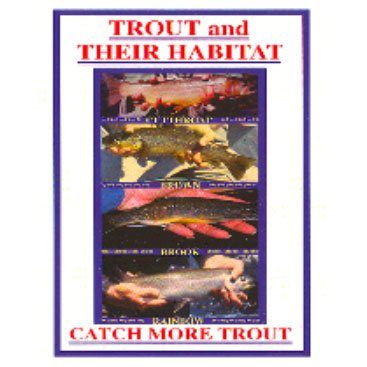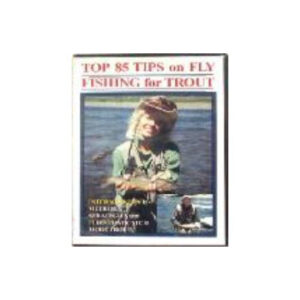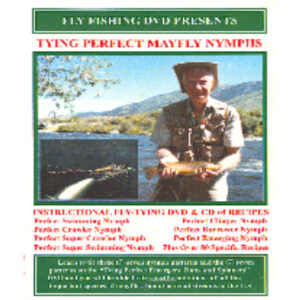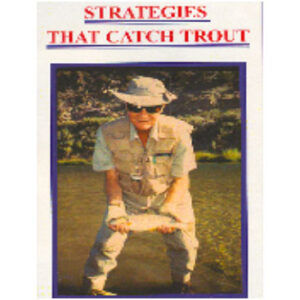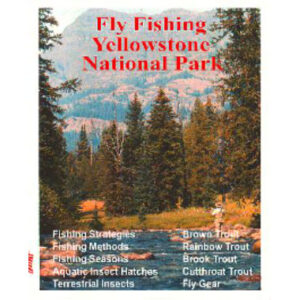This program includes scenes from numerous streams located throughout the United States from the East, Mid-West and Western states.
“Trout and Their Habitat” covers the four major species of trout; the Brown, Brook, Cutthroat and Rainbow; their range, and distribution.
Considerations that should to be given to the different types of water, such as pools, runs and riffles are included.
*****Learn about the particular habits and habitats of each species.
*****Understand the different strategies used for freestone streams, tail-waters, spring creeks and still waters.
*****Examine the differences in native, stocked and stream bred or wild trout.
*****The trout’s senses of sight and hearing are discussed in relationship to how it affects the angler’s approach.
Almost ironically, tail waters are affected by the same acts of nature as the freestone streams, that is, rainfall and snowfall. It is just that man is somewhat in control of it. Some dams were built strictly for flood control purposes and in this case, the dam’s floodgates allow a more steady disbursement of the floodwater than Mother Nature would allow.
Most dams were built to produce electricity. Hydroelectric dams also are used to control flooding. Water is supplied by the reservoir above the dam and is dispersed through the turbines of the power generators as needed for electricity. Most of these dams also have flood, gates that allow additional water beyond the capacity of the turbines to pass through in the event of heavy rain or melting snow upstream. In many areas, the tail waters of dams are only cold enough to support trout due to the fact that the water is taken from the bottom of the lake or reservoir, which of course, is much colder than the surface and upper layers of the lake water. For this reason, many tail waters, especially those coming from very deep lakes, have an almost constant water temperature year round. For example, the tail waters of Alabama’s Smith Lake, a very deep impoundment, is cold enough to support a good population of trout, even though it is in the deep South. The San Juan River, or tail waters of Navajo Lake, New Mexico, is a top rated trout fishing destinations thanks to its constant low water temperature.
Spring water is different from other trout waters in many ways. It is usually clearer, purer, supports more plant and aquatic insect life and usually remains an almost constant temperature year round. The average temperature of spring creeks is probably between forty-eight and fifty degrees Fahrenheit. This provides cool water for trout in the summer and water that does not freeze in the winter. This constant water temperature and fertile ecology produces heavy midge, mayfly and caddis hatches as well as scuds and cress bugs. Some spring creeks have stonefly hatches. Normally, the rate of water flow is more constant than it is with other type streams and rivers. Of course, most spring creeks have pools, riffles and runs that vary the rate of flow, but it is not nearly as affected by rainfall as freestone streams.
Patterning what to use and how to fish spring creeks is, if anything, easier than other streams. Fishing them, however, is usually more difficult. On a clear sunny day with polarized sunglasses you can usually easily spot trout in spring creeks if you use a stealthy approach. This tends to make you think they are ahead of the game, but usually just adds up to frustration when you realize the trout is aware of your presence.
bred trout are more difficult to fool than stocked trout and consequently, they are harder to catch. Hatchery raised trout, in may cases, are caught shortly after they have been stocked and in many cases, in large numbers proportional to the quantity stocked. For at least the earlier part of their life stocked trout have become accustomed to being fed at a hatchery. They have not developed the same fear of predators as the native or stream-bred trout. They have not yet learned what their new food supply, consist of and can therefore be fooled by a large variety of baits and flies. Neither have they learned where to feed most effectively and where to rest in comfort and with security.
Of course, the amount of water in a freestone stream is drastically affected by the amount of rainfall, and when runoff occurs, snow fall. In the higher elevations of the Western Rocky Mountains, in late spring and early summer, this runoff can be the major source of problems. Many streams become unsuitable for fishing for a few weeks during this time of the year. Runoff times are fairly predictable. They may vary from year to year, however, depending upon the amount of snowfall as well as the elevation of the area and its northern proximity. Some runoff usually occurs in the Appalachian mountains of the Eastern United States, again depending upon the amount of snowfall and the location and elevation of the mountains that form the freestone stream. All freestone streams are affected by the amount of rainfall. Very heavy amounts of rainfall can cause extreme turbulent stream conditions in the higher elevations and flooding conditions in the lower elevation streams. Just as bad for the trout fisherman, as well as the trout, are periods of drought, especially during the hot months of summer. Water in some freestone streams can reach critically, low levels and rates of flow that leads not only to tough fishing conditions but also, harsh environmental conditions for the trout.
Length: 55 min. plus promos 25 min. Total of 1 hour, 80 min.
